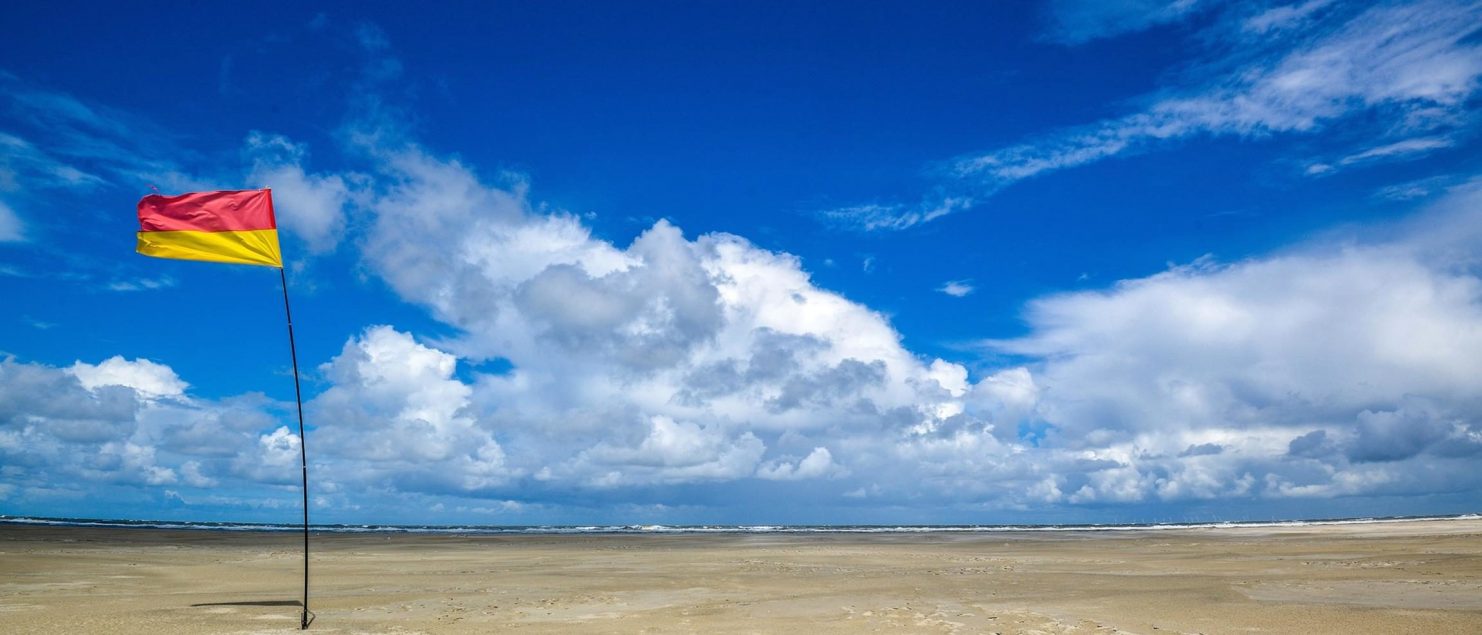Signal flags on the beach: meaning and how to recognize them
Summer is approaching and beach holidays and days at the beach are coming. The “world” of beach and bathing is yet another context in which flags play a fundamental role in communicating important messages or signals, using a universal language.
After speaking in a previous article about the flags of the International Nautical Code and their meaning,in this article we move from the sea to the flags on the beach. White, red, yellowand bathing flags are so famous and iconic that they have become almost a symbol of the beach, especially for those who live in a seaside town andhave seen these flags wave every summer, since their birth.
Beach flags have thefunction of communicating extremely important messages, but bathers do not always really know the meaning of individual flags.
It is therefore good to enter, a little more, the world of beach signal flags to learn about the messages of the individual flags, before venturing out to sea, whether for a swim or for a kayaking trip.
The meaning of the most common beach flags
Unlike nautical flags and,with a highly precise and widely shared International Nautical Code, beach signal flags are not regulated by international codes and it is therefore quite common that the use of these may slightly change between different places.
In any case, the most common flag on the beachare the white flag, the red and, immediately after, the yellow flag.
These three flags are among the most common and widespread and, although with some small differences, incorporate unique andgenerally shared meanings in different countries.
The three flags are intended to give important indications regarding the safety of the sea and thebeach, in relation to the presence or not of the rescue service and weather conditions.
Specifically, the white flag generally indicates that the rescue service is present and active on the beach and that the weather conditions do not involve possible problems or restrictions on entering the water. When the white flag is hoisted, the sea is calm and still supervised by the rescue service, so the conditions are perfect for bathers who can safely get into the water.
The red flag, on the other hand, warns thatbathing can be risky and is therefore not recommended for bathers. It is hoisted when the weather conditions are not optimal, when the sea is particularly moved by currents or when bad weather conditions such as thunderstorms, whirlwinds, etc. are expected.
However, the red flag is also used to signal that the rescue service is absent there or temporarily out of service.
Less frequent, but still important, is the yellow used for signs that do not only have to do with bathing, but extend to the whole beach. This flag of warning, in fact, is used in extraordinary cases to indicate the obligation to close umbrellas on the beach, due to extremely critical weather forecasts.
Signaling flags at the beach: differences and variants
As mentioned above, the use of signaling flags on the beach can vary greatly from place to place.
Additional flags may be used in some countries, but it may also happen that the same flags are used with a different, and even in some cases, opposite meaning.
To give a few examples, in the United States of America and Australia the red flag is used in a similar way to what has been said so far, but with some differences.
The red flag in Australia not only indicates danger, but also indicates a real ban on bathing, while in the U.S.A. the use of the flag is more similar to the one we know, with the difference that two red flags can be hoisted to signal an absolute ban on bathing due to excessive sea danger.
The ban is also provided for in Italy, but this message is associated with a less frequent flag and hoisted only in extraordinary and extremely dangerous cases: the black flag.
Another curious fact that unites (and distinguishes) Australia and the U.S.A. is the use of special checkered flags, one white and red and another black and white.
These flags are used for unusual alerts for our beaches, but extremely common on ocean beaches, and are related to regulation of surfing activities and shark sightings.
The white and red checkered flag, in fact, in both countries reports the sighting of a shark and invites bathers to get out of the water.
Be ware, however, of the black and white checkered flag because if in the U.S.A.this flag is used to indicate an area where surfing is practiced and where swimming is prohibited, in Australia the same flag has meant the opposite and signals a ban on surfing in a particular area.
There are also other variations of use of flags on the beach in the various countries of the world, but also in the different regions of Italy.
In some European countries such as Germany and Spain, for example, the green flag is used as an equivalent of the whiteflag and with the same meaning.
Also remaining in Italy, the white flag is replaced in some regions such as Friuli and Veneto, where a blue flag is used instead. Blue flag that has nothing to do, however, with the so-called “Blue Flag” known in the rest of Italy and Europe as the recognition given by the Foundation for Environmental Education to seaside resorts that meet particular requirements of quality and cleanliness of the water.

